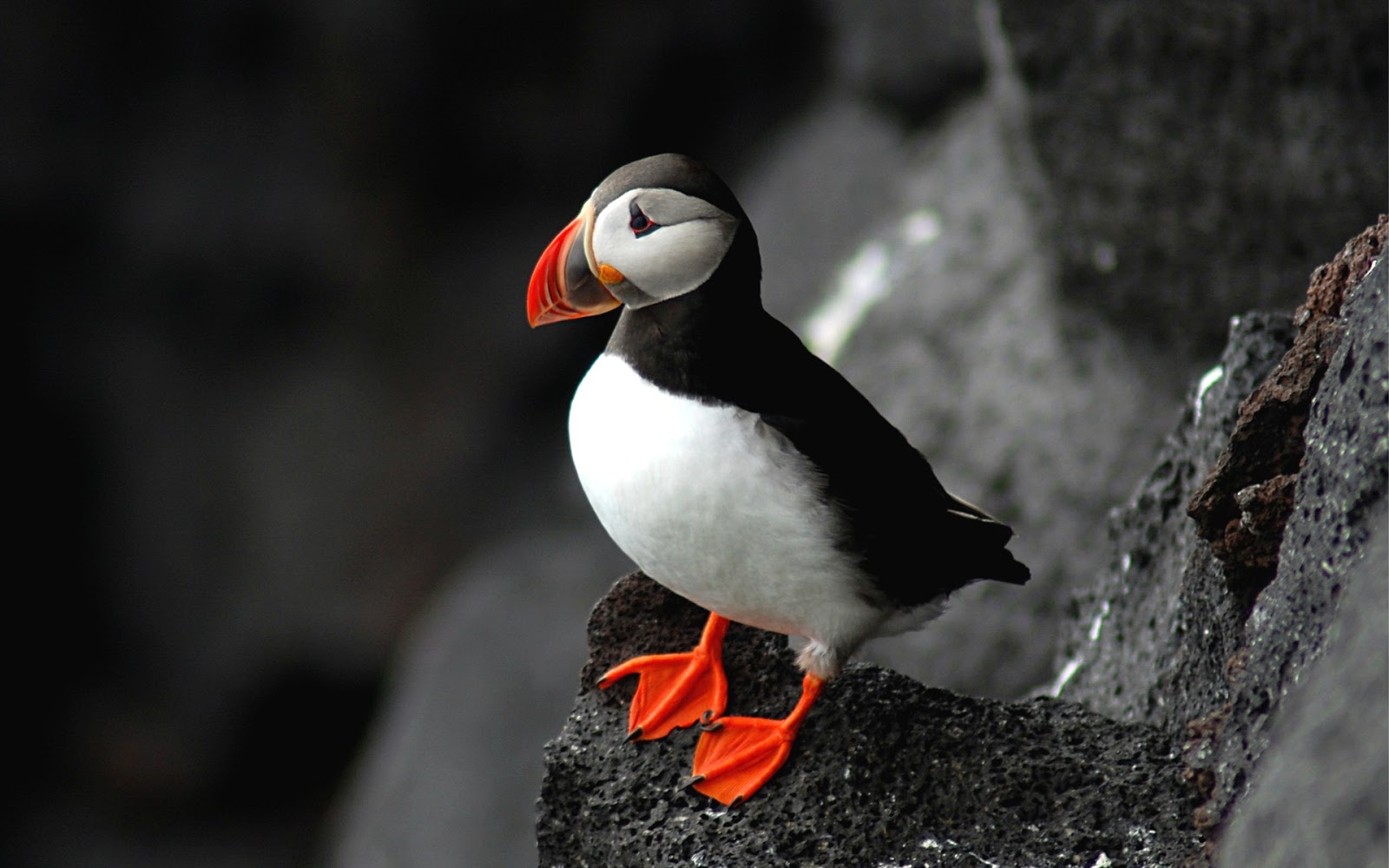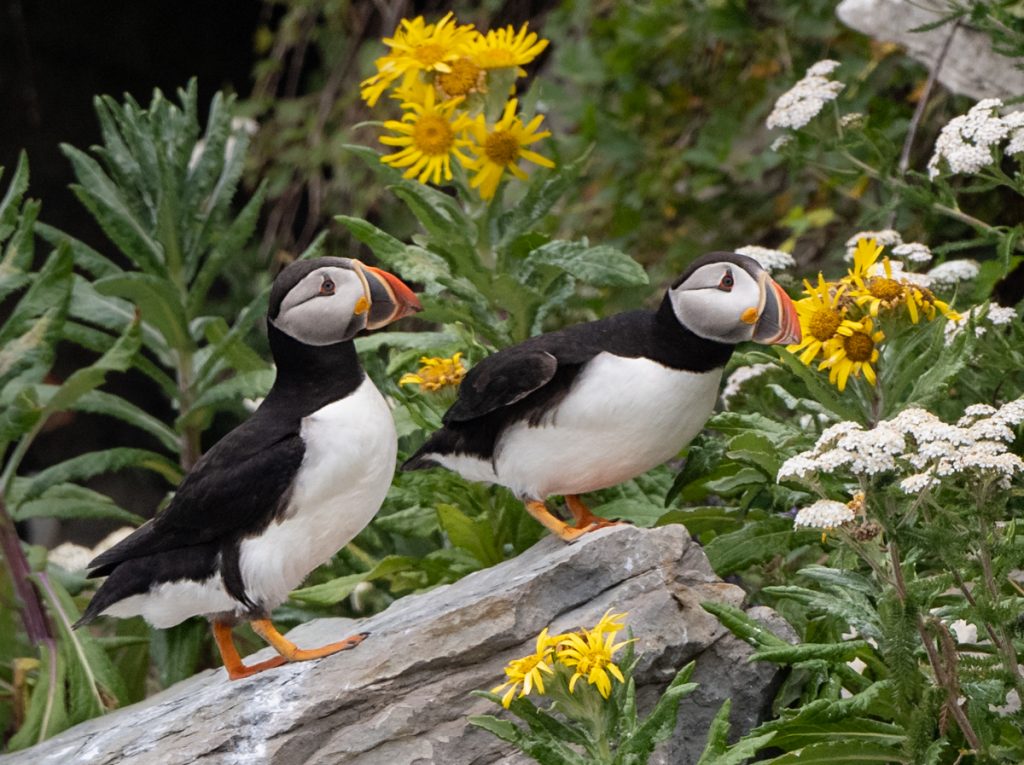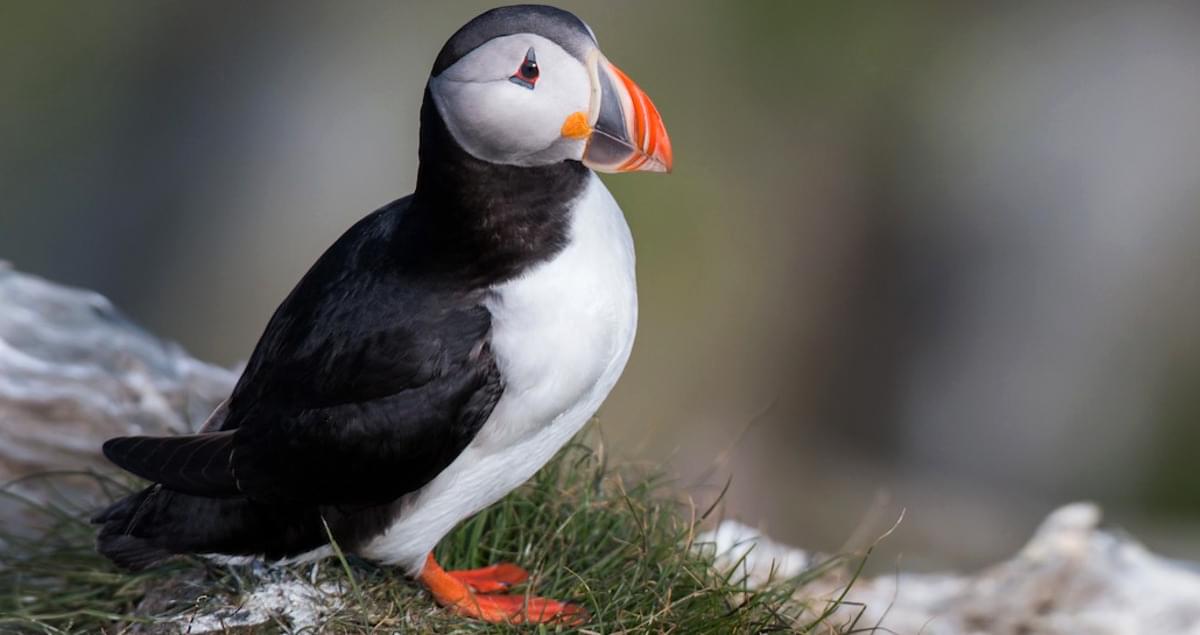


The puffin has dense black feathers on the back, and a white chest. The Atlantic puffin’s weight averages 500g with a metabolic rate of 313-335 kJ/d. Males are slightly larger and more colorful (during breeding season) than females. On average, the Atlantic puffin is 18 cm tall with a wingspan of 50.8 cm. The Atlantic puffin is a densely-feathered seabird. ( Barrett and Rikardsen, 1992 Guildford, et al., 2011) When in flight, these birds stay at about 30 m above the water. When Atlantic puffins are not breeding, they are traveling across the Atlantic Ocean and resting on the water when tired. The puffins use their long bills to shovel out a burrow that is on average 70-110 cm long and put feathers and some grass to complete the nest. The puffins use large rocky areas for protection against the elements, as well as predators. However, when the Atlantic puffins breed in summer, they inhabit rocky cliffs along the coast with an altitude of 218 meters. ( Kress and Nettleship, 1988 Merkel, et al., 1998)Ītlantic puffins are a migratory species they usually spend most of their time at sea, traveling across the Atlantic Ocean. When the Atlantic puffin is not breeding (late summer until spring), it is traveling across the Atlantic Ocean from the United Kingdom to Maine (United States) in the late summer, then from Maine to the coast of Spain every winter, spending months on the water. The Atlantic puffin has also been found off the coast of Greenland, United Kingdom, Eastern Canada, and the Netherlands as well as Ireland. This species is also found on the Great Island in Newfoundland throughout the summer breeding season. Sixty percent of the individuals inhabit the coast of Iceland during breeding season. They may use visual reference points, smells, sounds, the Earth's magnetic fields-or perhaps even the stars.The Atlantic puffin ( Fratercula arctica) is a migratory species, spending most of the time traveling back and forth across the Atlantic Ocean, returning every breeding season to its native breeding areas. It is unclear how these birds navigate back to their home grounds. Puffin couples often reunite at the same burrow site each year. When a chick hatches, its parents take turns feeding it by carrying small fish back to the nest in their relatively spacious bills. Females lay a single egg, and both parents take turns incubating it. The birds often select precipitous, rocky cliff tops to build their nests, which they line with feathers or grass. Iceland is the breeding home of perhaps 60 percent of the world's Atlantic puffins. Puffin Colonies and BreedingĪtlantic puffins land on North Atlantic seacoasts and islands to form breeding colonies each spring and summer. By flapping their wings up to 400 times per minute they can reach speeds of 55 miles an hour. In the air, puffins are surprisingly fleet flyers. Puffins typically hunt small fish like herring or sand eels. They steer with rudderlike webbed feet and can dive to depths of 200 feet, though they usually stay underwater for only 20 or 30 seconds. They are excellent swimmers that use their wings to stroke underwater with a flying motion. These birds live most of their lives at sea, resting on the waves when not swimming.

Atlantic puffins have penguin-like coloring but they sport a colorful beak that has led some to dub them the “sea parrot.” The beak fades to a drab gray during the winter and blooms with color again in the spring-suggesting that it may be attractive to potential mates.


 0 kommentar(er)
0 kommentar(er)
